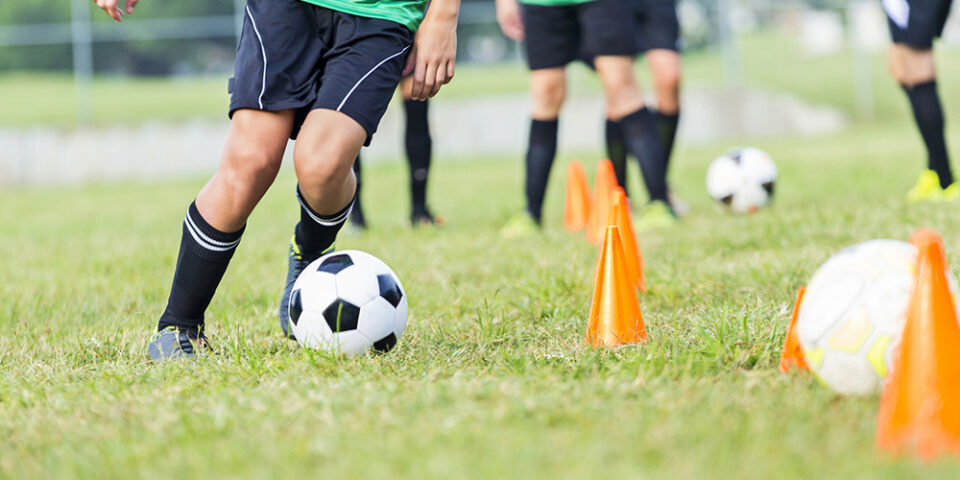How to prevent ACL injuries in young athletes
ACL injuries are common in sports and other athletic pursuits that involve sudden changes in direction or quick stops, like soccer, football, basketball and more. ACL injuries in young athletes could lead to significant time unable to play their favorite sport during recovery or sideline a promising season.
Sports medicine specialist Christina Gutta, MD, spoke about how to prevent ACL injuries in young athletes and what you need to know.
What is an ACL injury?
“ACL stands for anterior cruciate ligament,” said Dr. Gutta. “Located in the center of the knee, the ACL plays a crucial role in stabilizing the knee joint, particularly during activities involving pivoting, cutting or a sudden change in direction.”
An ACL injury usually happens when the ACL is stretched beyond its normal range of motion or even torn, often due to a sudden twisting motion or an impact to the knee, like in a tackle.
What are the symptoms of an ACL injury?
“The biggest symptom is going to be a sudden pain in the knee that may worsen with movement,” said Dr. Gutta.
Other symptoms of an ACL injury include:
- Knee swelling
- A feeling of instability where the knee joint seems to “give way”
- Popping sensation at the time of injury
- Limited range of motion
- Difficulty bearing weight
How is an ACL injury treated?
“Typically, how we treat an ACL injury is going to depend on how severe the injury is, as well as how active the injured patient is and what their goals for their recovery are,” said Dr. Gutta.
For less severe injuries, treatment may be as simple as rest, ice, compression and elevation for controlling the pain and swelling. Young athletes may need physical therapy or the use of a brace during recovery in order to recover their prior range of motion. They will often be told to avoid any of the motions or activities that led to the injury in the first place while they’re recovering.
Surgical treatment may be needed for more severe injuries, such as a torn ACL. This surgery generally involves repairing the tear using a graft, which might come from a donor or from a tendon in the patient’s knee.
Finally, in regenerative treatment, platelet rich plasma injections can help to accelerate healing and reduce inflammation, making for a more comfortable recovery period.
How can injured young athletes return to sports safely?
“If your child injures their ACL, the timeline for them returning to sports could vary, depending on how severely they were injured, any surgical intervention that was required, the progress of their rehabilitation and what specific demands their sport may require of their body,” said Dr. Gutta.
Dr. Gutta noted that it’s important to work closely with your health care team to develop a personalized plan that ensures a safe and successful return to sports.
Are there ways to prevent ACL injuries in young athletes?
“You’ll need to understand what raises the risk for injury in young athletes and implement age-appropriate exercises, building and conditioning strength and flexibility,” said Dr. Gutta. “Programs that improve lower limb strength, balance and coordination will be key.”
Dr. Gutta stated that any strength-building or conditioning routine should emphasize proper movement mechanics and form, landing techniques and better control of the body during jumping, cutting and pivoting.
You’ll also want to ensure that your young athlete’s sports equipment and footwear are well maintained, and make sure there’s adequate time for rest and recovery between training and competitions to prevent overuse injuries or a fatigue-related accident.
Young athletes should be supervised by qualified coaches and instructors who prioritize safety and focus on proper technique and injury prevention.
Find an orthopedic specialist you trust
Find a provider who’s right for you by viewing their online profiles, star ratings and reviews.
Find an Orthopedic Doctor

